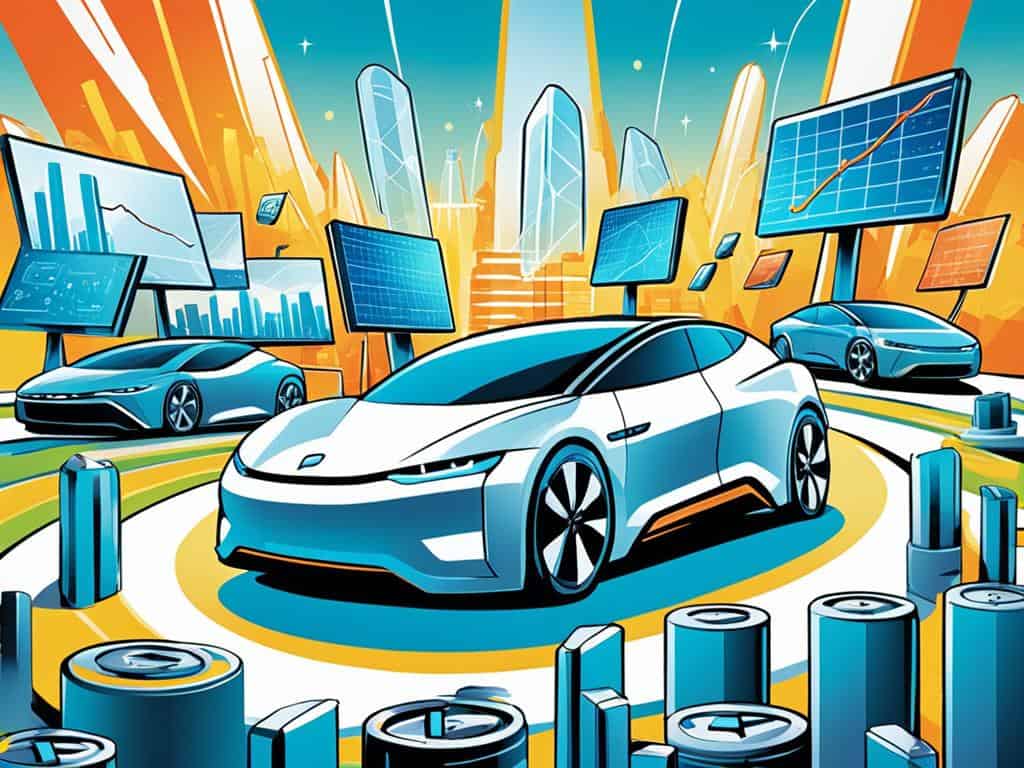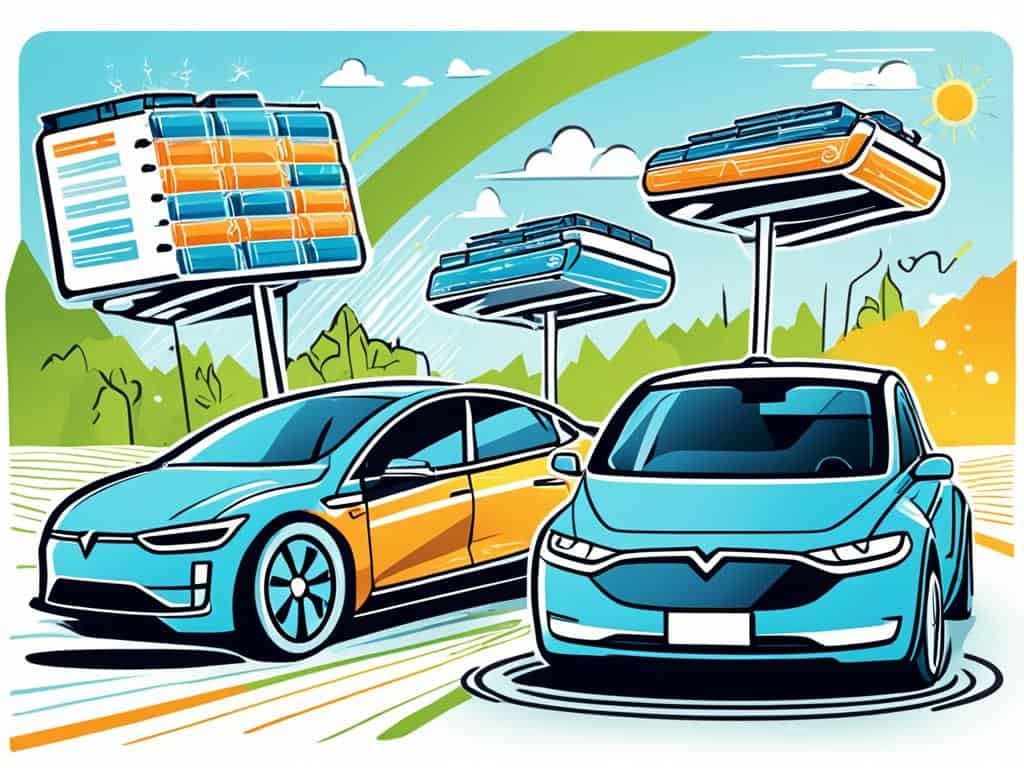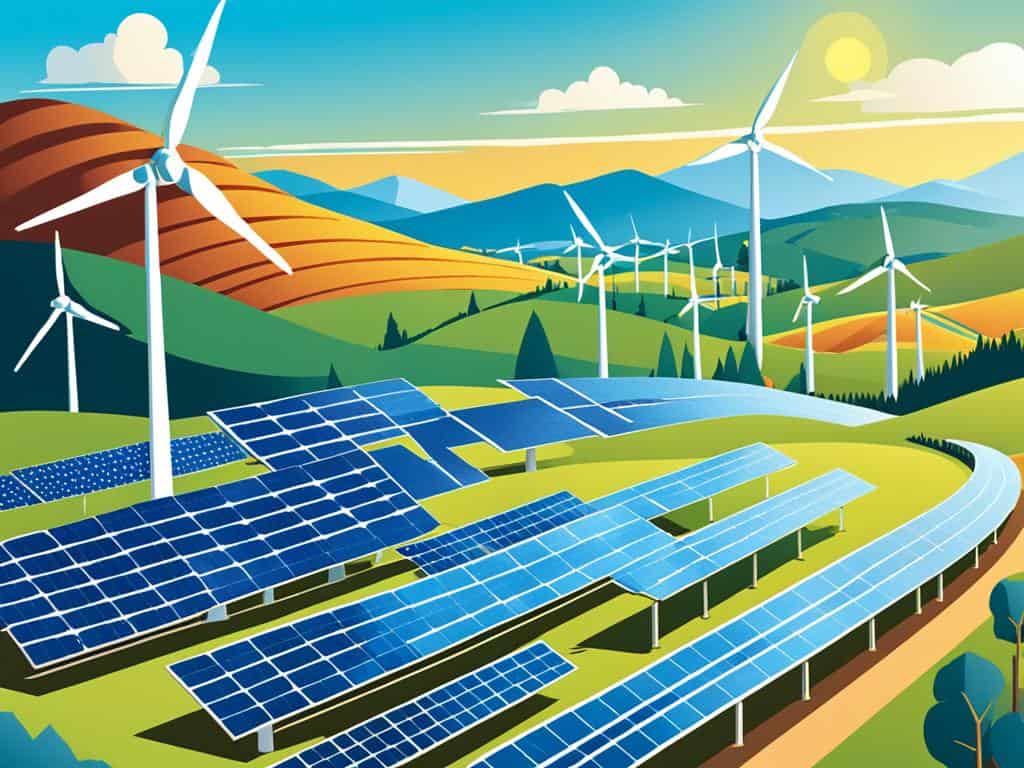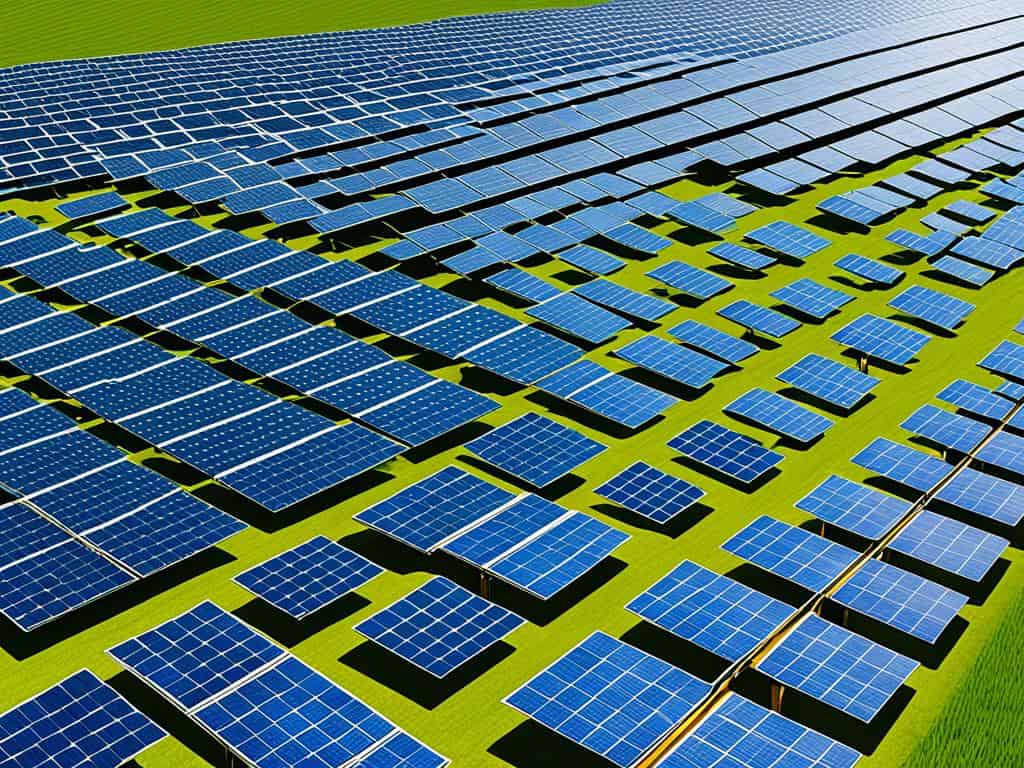Lithium Battery Price Trends & Comparisons 2024
Explore the latest trends and comparisons in lithium battery prices for 2024. Get insights on cost-effective lithium battery solutions in India.

The world is moving fast, and the demand for lithium batteries is skyrocketing. But have you ever wondered why lithium battery prices are falling? India is making big moves in the green energy race. It’s crucial to keep up with the lithium battery price trends. This year was a game-changer. The demand for automotive lithium-ion batteries shot up. At the same time, their prices began to drop. Several factors are at play here. The rise in electric vehicle (EV) sales and new battery technologies have led to changes in lithium-ion battery cost. This shift could greatly help India’s push for clean energy, with leaders like Fenice Energy leading the way.
Fenice Energy is right in the middle of this change, not just watching from the sidelines. They’re helping steer India towards a greener future with their clean energy solutions. These include solar power, backup systems, and EV charging stations. Looking at the lithium battery market comparison, we face a big question. Can the falling cost of lithium batteries help change how India uses energy? What could this mean for the country’s clean energy goals?
Key Takeaways
- Understanding the nexus between falling lithium battery prices and India’s potential green energy boom.
- Dissecting the steep increase in automotive lithium-ion battery demand and its effects on pricing.
- Deciphering the impact of lithium-ion battery price trends on India’s clean energy landscape.
- Clarifying Fenice Energy’s role in leveraging market changes for India’s renewable energy advancement.
- Analyzing the potential for cost parity between EVs and internal combustion engine vehicles.
Examining the State of the Lithium-Ion Battery Market
The lithium-ion battery market in India is on the brink of transforming the country’s energy scene. A key report, supported by Niti Aayog, explores the market’s potential and challenges in making batteries locally. It specially looks at how regulations and government plans are shaping up.
Fenice Energy, a leader in India’s clean energy, is grabbing this opportunity. Their services in solar power, backup systems, and EV chargers align with India’s goals. This move is expected to boost the lithium-ion battery market.
Fenice Energy is pushing the demand for electric vehicle batteries and better energy storage. This aligns with a market analysis that suggests a huge growth, reaching multimillion INR by 2031.
Projected Market Size by 2031
New battery technologies are central to this growth. The latest report shows the government’s support with tax breaks and incentives for battery makers.
Technological Advancements Influencing Market Growth
The report closely examines the economic benefits of making battery cells in India. It talks about cost savings, more foreign investment, and increased tax revenue. Here, Fenice Energy is set to play a major role.
Impact of Global Events on Lithium-Ion Battery Supply Chain
The market faces challenges like COVID-19 and global politics. The report studies these issues and the financial details needed for investment. It shows how India plans to stay ahead in the global battery market.
The report’s tables show how financial plans are set up. They include details on subsidies and key industry players. This helps companies like Fenice Energy plan for the future in India’s growing lithium-ion battery market.
| Report Element | Description |
|---|---|
| Policy Framework | Inspection of regulatory and policy frameworks at different government tiers, aiming at strengthening India’s local production facilities. |
| Taxation Incentives | Scrutiny of proposed indirect tax incentives and direct taxation interventions to fortify the financial framework for manufacturers. |
| Economic Impact | Assessment of the domestic manufacturing of battery cells on cost-benefit, FDI, and tax revenues. |
| Financial Assumptions | A projection of capital expenditure, funding sources, and financial viability underpinning the market’s expansion. |
| Subsidy Programs | Elaboration on the subsidy considered in the financial model, with explicit timelines for subsidy program implementation. |
Such reports pave the way for businesses like Fenice Energy. They use their expertise to fuel growth in the electric vehicle battery and energy storage sectors.
Deciphering the Drivers of Lithium Battery Price Fluctuations
Understanding the reasons behind lithium battery price fluctuations is key for the clean energy market. The sector’s growth makes it important to recognize how raw material costs, production scale effects, and battery commoditization influence prices.
Commoditization and Production Scale’s Role in Pricing
As electric vehicles and renewable energy storage get popular, lithium batteries are becoming more common. This shift is due to high demand, which increased from 19 GWh in 2010 to 285 GWh in 2019. Experts predict it will reach 2,000 GWh by 2030.
The boost in electric car sales, with over 3 million sold in 2020, shows the industry’s growth. This 40% increase from the previous year, along with expected growth to 125 to 220 million electric cars by 2030, demands more efficient battery production.
Companies such as Fenice Energy are setting the stage by providing clean energy solutions. Since 2010, the cost per kWh of Li-ion batteries has dropped by 87%. This shows the advantage of increasing production.
Raw Material Price Variations and Their Impact on Costs
Changes in the price of materials like lithium, cobalt, and nickel also affect battery prices. The demand from almost half a million electric buses in China impacts these costs. Watching these price changes is critical because they directly affect how much batteries cost to make.
By 2030, there will likely be a huge sale of 10 million BEVs and 20 million HEVs. This will need about 23 billion kWh of battery capacity each year just for HEVs. This huge demand could change the cost of raw materials.
- The average energy content of small cars in the EV segment in 2016 was 18.2 kWh. This shows the important role of Li-ion batteries in moving away from fossil fuels.
- For medium to large cars, the energy content was 36.2 kWh, giving them a range of 231 km. In Europe, HEVs had a median energy content of 9 kWh.
- With Fenice Energy’s use of clean energy solutions, the company is leading the way in taking advantage of battery technology improvements.
Looking into lithium battery price changes helps leaders and companies like Fenice Energy make smart decisions in the energy sector. Using advanced technology, watching production, and sourcing materials will help stabilize battery costs. This supports India’s move towards sustainable energy.
Lithium Battery Price Variations across Applications
Lithium battery prices change a lot, driven by use, innovation, and scale. Sectors with big orders see best lithium battery deals. Yet, special needs drive higher automotive battery pricing in some areas.
In consumer electronics batteries, prices vary for different gadgets, costing more for top performance. Meanwhile, electric vehicles (EVs) see cheaper low-cost lithium battery options due to high demand and production advancements. This helps them compete with regular cars.
BloombergNEF highlighted a 14% drop in lithium-ion battery pack prices recently. This major decrease shows the move towards cheaper options. It’s expected to keep going down, thanks to constant research and better manufacturing processes.
| Year | Average Battery Pack Prices | Battery Electric Vehicle (BEV) Packs Prices | Lithium Iron Phosphate (LFP) Packs Prices |
|---|---|---|---|
| 2023 | $139/kWh | $128/kWh | $130/kWh |
| 2024 (Projected) | $133/kWh | Predicted to align with pack prices | Predicted to maintain lower than average |
| 2025 (Projected) | $113/kWh | — | — |
| 2030 (Projected) | $80/kWh | — | — |
Quality and safety are key in choosing batteries. In India, electric vehicles are gaining ground. Fenice Energy is a leader there, offering affordable, reliable lithium batteries. Prices range from 500 INR for small gadgets to over 100,000 INR for EV batteries. The focus on sustainable and economically viable solutions is clear.
Lithium-ion batteries are preferred for their high energy density and long life. They are used in many things like home energy systems and medical devices. This shows their wide usefulness.
As the world seeks clean energy, India’s growth in EVs is key. Fenice Energy is part of this move towards sustainable solutions. It shows how new, cost-effective energy choices matter for a green future.
As the battery market grows, we can expect better prices and technology. This makes green energy more available. Fenice Energy helps by pushing for clean energy. It matches its energy solutions to market trends.
Trends in Energy Storage and Electric Vehicle Adoption
The automotive industry and electricity grid are changing a lot. This change is mainly because electric vehicle battery adoption is growing. India is becoming a leader in renewable energy. It shows in their increasing automotive battery demand and better stationary storage lithium applications.
Growth in Automotive Sector Battery Demand
In 2022, there was a big change in automotive battery needs in India, thanks to more electric vehicle sales. The need for lithium-ion batteries for vehicles increased by 65%, reaching 550 GWh from 330 GWh the year before. This increase matches what’s happening worldwide. For example, China’s battery demand for vehicles grew by over 70%, and electric car sales went up by 80%.
The United States also saw an 80% increase in battery demand. This was much higher than the 55% increase in electric car sales in the same period.

The electric vehicle market is complex, full of supply and demand challenges. About 60% of the world’s lithium, 30% of cobalt, and 10% of nickel were used in 2022. These materials are essential for EV batteries. The demand was higher than the supply.
Prices of important minerals like nickel doubled compared to the average prices between 2015 and 2020. Despite these issues, companies like Fenice Energy are finding ways to meet the growing automotive needs in India.
Stationary Storage Solutions and Lithium Battery Applications
As the automotive sector grows, so does the use of stationary energy storage systems. These systems often use lithium batteries for grid stabilization and energy management. Lithium batteries are becoming more versatile for stationary use. This is thanks to new technologies. For example, about 30% of anodes had silicon in 2022. This improves battery energy density.
There’s also a new trend in battery chemistry. Sodium-ion batteries were about 30% cheaper than lithium iron phosphate batteries in 2022. This points to a move towards more affordable energy storage options. Battery technology is improving. Batteries now have higher energy, better density, longer lives, and safer designs. These improvements help companies like Fenice Energy offer better solutions and support India’s clean energy goals.
The numbers make it clear: the electric vehicle and energy storage revolution has started. With companies like Fenice Energy leading, India is ready to make the most of these trends.
Competitive Analysis: Positioning in the Lithium Battery Marketplace
The lithium battery market is growing fast. It could be 5 to 10 times bigger in the next ten years. Battery prices have fallen to a low of INR 10,705/kWh in 2020. This shows a trend towards more affordable lithium battery prices.
Leaders in the lithium battery market are making big changes. They want to create a sustainable, cost-effective industry. Their hard work is making batteries cheaper and better.
Using local materials for making lithium batteries has become very important. This helps make batteries cheaper. It also makes them better for the environment. This matches what the government wants, too.
Fenice Energy is a major player in India’s lithium-ion battery market. They’ve made a big impact with their focus on solar energy and better charging solutions. This shows how Fenice Energy is leading market trends in India.
Global Leaders in the Lithium-Ion Battery Production
Top companies are increasing their lithium-ion battery production. They want to meet the growing demand. These leaders are also working on better recycling. This helps make a supply chain that’s good for the environment and easy to access.
Companies from all over the world are working together. They aim to change the market by focusing on innovation and making production cheaper. This collaboration is changing the battery industry for the better.
Role of Fenice Energy in Shaping Market Trends
Fenice Energy has a big influence on the lithium battery market. They work with solar power and electric vehicle charging. This helps them lead the way in market trends. They also push for better science education and research.
By training their workforce, Fenice Energy helps the sustainable growth of the industry. They make sure lithium battery prices stay competitive. This encourages innovation to flourish.
Fenice Energy is driving change as the lithium battery market grows. They strive for market leadership. At the same time, they support sustainability and technology advances. This makes them a key player in the industry’s future.
Regional Disparities in Lithium Battery Prices
Looking at lithium battery prices worldwide shows big differences. Asia, especially China, offers cheaper options. This is due to strong competition and high production levels there. These factors make Asia a leader in electric vehicles (EVs) and gadgets.

Price Trends in the Asian Market
Asia’s lithium battery industry is booming. This is thanks to efforts for more electric use and cheaper production. Government policies in places like India also add to this growth. Moreover, discovering lithium in India might change price trends even more.
Europe and North America: Comparing Costs
Europe faces higher battery costs than Asia. This is because of tough rules, varied uses, and less competition. Meanwhile, North America’s situation is unique. It has challenges like needing greener mining methods. Yet, the rising demand for lithium might influence the world market.
| Region | Estimated Lithium Reserves (Tonnes) | Typical Battery Lifespan (Years) | Price Trend |
|---|---|---|---|
| Asia (India) | 31,000 | 5+ | Downward |
| Europe | N/A | 5+ | Stable/Upward |
| North America | N/A | 5+ | Stable |
Lithium-ion batteries are key for clean energy and transport. They’re leading due to their power and efficiency. Fenice Energy aims to boost clean energy use in India. It works with the global market to make green solutions affordable.
Lithium Battery Price as a Determinant for Technology Selection
The battery industry is evolving fast. Costs and technology developments are closely linked. This is very clear in the lithium-ion battery sector. Here, price factors lead to new battery types being used. Fenice Energy offers affordable lithium battery options. They meet India’s increasing demand for clean energy.
Navigating the Shift to Alternative Battery Chemistries
Companies and buyers are looking for cheaper lithium battery alternatives. Lithium iron phosphate (LFP) is becoming quite popular due to its lower cost. Fenice Energy provides LFP among other efficient batteries. They aim to offer good quality that’s also affordable. This helps more electric vehicles (EVs) hit the roads in India.
Cost Implications of High-Energy-Density Battery Technologies
The search for powerful batteries is intensifying. Selecting the right technology is now crucial. Innovations like silicon anodes and solid-state electrolytes are being explored. They offer high efficiency without hiking the price too much. India wants 30% of its vehicles to be EVs by 2030. For this, cost-effective and high-performing batteries are needed.
Let’s consider some market stats related to the lithium battery industry:
- Projected market growth from $57.4 billion in 2023 to $120.65 billion by 2028.
- Anticipated global demand increase from over 700GWh in 2022 to 4.7TWh by 2030.
- EVs expected to account for 4,300GWh of Li-Ion battery demand by 2030.
- Favorable policy environment in India, including a GST reduction on EVs from 12% to 5%.
New technologies have made lithium batteries better. They are now lighter, smaller, and store more power. This fits well with needs ranging from grid storage to EVs. Smart policies and incentives play a big role in this energy shift.
The table below shows how different lithium batteries compare. It looks at both technical specs and costs. This helps us understand what drives the choice of battery technologies:
| Battery Type | Energy Density | Cycle life | Safety Rating | Cost |
|---|---|---|---|---|
| Lithium Cobalt Oxide | High | Lower | Moderate | Higher |
| Lithium Manganese Oxide | Medium | Moderate | High | Medium |
| Lithium Iron Phosphate | Lower | Very High (up to 14x lead-acid) | Very High | Lower |
Fenice Energy follows strict safety and performance standards like ABYC E-13. This ensures all battery technologies they offer are top-notch. High recharge rates and extra parts—like different pulleys—can add costs. But, Fenice prices their batteries keeping India’s price sensitivity in mind.
Thermal batteries are another good option. They provide cost-effective heat and can replace a lot of industrial energy needs. Policies also support this shift. They aim to cut emissions and encourage greener industrial methods.
Switching to cleaner battery tech and boosting EV use in India are crucial. They’re not just trends but necessities for a better future. Fenice Energy offers advanced, affordable lithium batteries. They’re leading the way and helping the planet.
“Lithium Battery Price” and the Shift towards Cost-effective Variants
The global lithium-ion battery market is changing fast. It’s moving towards affordable lithium battery alternatives. In 2018, the market was valued at INR 21,60,975 million. It’s expected to reach over INR 40,91,490 million by 2024, growing at a steady rate of 11% from 2019 to 2024. This growth goes hand in hand with a big drop in lithium battery prices. This shows how competitive the market is and how effective cost-effective lithium battery solutions are.
Battery prices have dropped a lot from 2010 to 2018. They fell by 85%, to about INR 13,376 per kWh. This drop from nearly INR 76,000 per kWh shows big progress in making low-cost lithium options. By 2040, electric vehicles are expected to make up half of the world’s cars. This is about 900 million vehicles. The drop in prices is likely to continue, making lithium-ion batteries key for clean transportation.
Soon, the cost of lithium-ion batteries will fall even more. By 2019, it’s expected to go below INR 15,200 per kWh. Between 2025 and 2026, it might reach INR 7,600 per kWh. This drop is mainly due to competitive pricing strategies, new production methods, and big tech upgrades.
| Year | Average Lithium-Ion Battery Price (per kWh) | Global Electric Vehicle Projections |
|---|---|---|
| 2010 | INR 76,000 | N/A |
| 2018 | INR 13,376 | N/A |
| 2019 | N/A | |
| 2024 | Projected Decline | N/A |
| 2040 | Approx. INR 7,600 (Forecast) | ~900 million EVs (Projected) |
Fenice Energy is a leader in clean energy solutions in India. It’s focused on making the market change towards affordable lithium battery options. The company is dedicated to providing cost-effective lithium battery solutions. They do this by using advanced technologies and building strong industry partnerships. This helps them stay ahead in a competitive market.
Looking towards a sustainable and economically sound energy future, making prices better and using efficient production is key. These steps are crucial for making affordable lithium battery options more accessible. It’s important for businesses and consumers to keep up with these changes. This way, everyone can enjoy the benefits of low-cost lithium options.

Predictions for Lithium-Ion Battery Pricing in 2024 and Beyond
Lithium-ion batteries are crucial for the clean energy shift. Fenice Energy leads by focusing on the latest battery trends in India’s market. They aim to make clean energy affordable.
Analysts’ Insights on Upcoming Price Trends
Last year, energy experts noticed a change in lithium-ion battery pricing predictions. Battery pack prices went up by 7%, reaching $151/kWh. Yet, prices varied greatly around the world.
In China, prices stayed low at $127/kWh. But, the US and Europe had much higher prices, by 24% and 33% respectively. Experts still feel hopeful. They see new tech and better manufacturing making prices more even soon.
Impact of Increased Manufacturing Capacities on Prices
The size of the global lithium-ion battery market was huge in 2023, valued at USD 68,587.12 million. It’s expected to grow even more. One main reason is that making more batteries can lower their cost.
This is very true for the APAC region, expected to grow a lot thanks to better production. Fenice Energy pushes for cheaper storage solutions. They believe new lithium supplies and better making of batteries will help.
| Segment | 2022 Average Price | 2023 Predicted Stance | Predicted Price by 2026 |
|---|---|---|---|
| All Sectors | $151/kWh | $152/kWh | Below $100/kWh |
| BEV Packs | $138/kWh | Stable with slight rise | Significant reduction |
| LFP Cells vs. NMC Cells | 20% Cheaper | Favorable pricing for LFP | Further price divergence |
| Demand | 603GWh | Continued Growth | Exponential Increase |
As 2024 approaches, we see a balanced story of lithium-ion battery costs. It’s about finding a balance between making lots of batteries and new tech discoveries. Fenice Energy uses both innovation and low costs in their solutions.
Conclusion
The lithium battery market is on the edge of major growth as we move into 2024. India is getting ready for a big jump in both demand and new ideas. Prices are going down because we’re making more batteries and getting better at it. We’re also seeing cheaper, but still powerful, battery types that help clean energy become more common and sustainable.
Fenice Energy is leading the charge in India’s energy change with its focus on clean energy. They’re making lithium batteries more affordable and effective. This supports their goal of a cleaner, greener future. Their work helps India and the world move towards more renewable energy and better energy storage solutions.
The battery market is advancing fast, thanks to economic growth, new technologies, and smart market strategies. These efforts shape the future of how we use and price lithium batteries. Companies like Fenice Energy play a big part in pushing us towards a future where everything runs on clean energy. India is right at the beginning of an exciting time. Here, new battery tech not only powers our gadgets but also leads the way to using clean and renewable energy.


